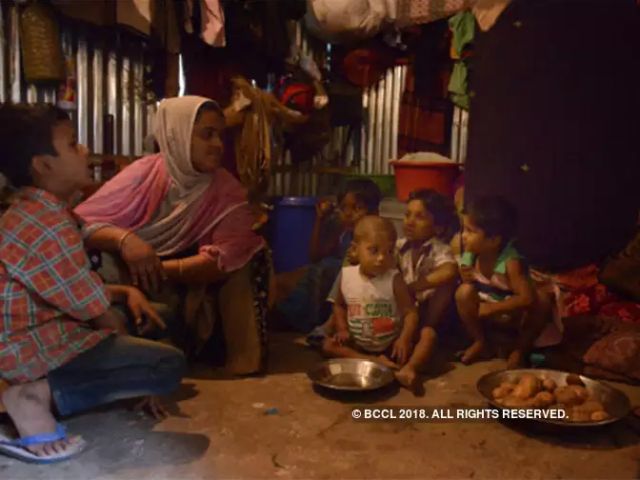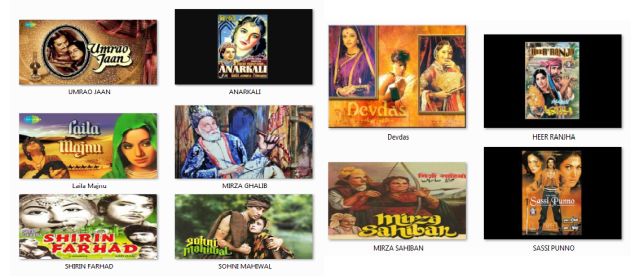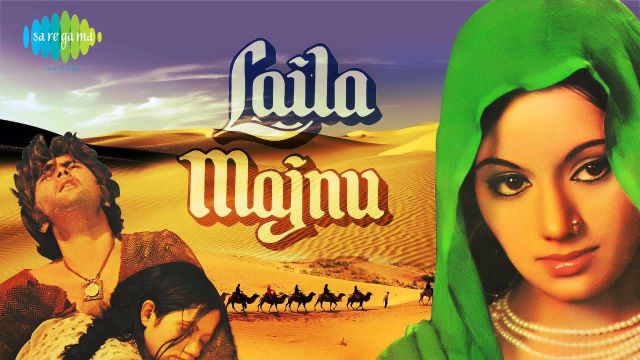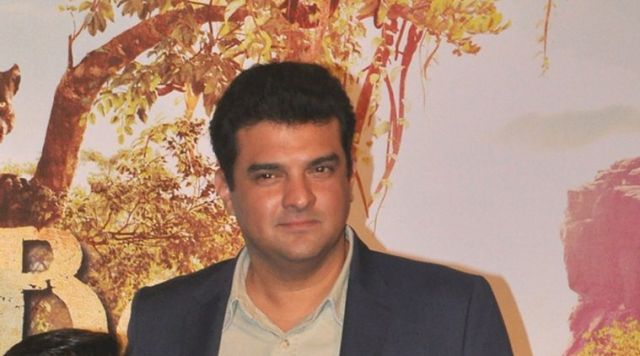
by admin | May 25, 2021 | News

Rohingya refugees at a camp at Baruipur.
By Nikhil M. Babu,
New Delhi : After Mohammad Haroon turned 15, he began watching Bollywood movies, walking four kilometres to a theatre near his village in Myanmar.
Little did he know that the Hindi he learnt watching these films would one day help him settle down in a foreign country to which he and his family had to flee to escape brutal persecution by the armed forces.
Haroon, a Rohingya, came to India, the country he had known from its movies, after fleeing to Bangladesh in a small hand-rowed fishing boat. That was after his cousin was raped and their huts were torched.
“I had watched about 100-150 Hindi films back home and I could understand Hindi by the time I came here (India). Speaking Hindi was a problem though,” Haroon, now 48, told IANS at a Rohingya settlement in Kanchan Kunj of south Delhi.
More than two dozen Rohingyas IANS interviewed in Delhi, Jammu and Hyderabad said they used to watch Bollywood movies in Myanmar that helped them to learn Hindi and made it easier for them to find jobs and make friends in India.
Rohingyas, mostly Muslims, are an ethnic minority, denied citizenship and have been “facing human rights violations and violence” at the hands of the military in the Buddhist majority Myanmar.
More than 800,000 Rohingya refugees have fled Myanmar in the last five years as a result of violence, according to the United Nations High Commissioner for Refugees (UNHCR) and there are around 21,500 Rohingyas in India.
Perched on a plastic chair, Haroon, a father of four, said the love for Bollywood was strong in Myanmar. He named his favourite stars — Amitabh Bachchan, Shatrughan Sinha, Mithun Chakraborty — and quickly added Hema Malini to the list.
Harooon’s favourite movies include Mithun starrers “Jagir” (1984), “Boxer” (1984) and “Disco Dancer” (1982) and Amitabh and Dharmendra starrer “Ram Balram” (1980).
“I’m forgetting the names, it was a long time ago,” Haroon said with a smile, remembering the times when Myanmar theatres had benches instead of seats.
But for Rohingya women watching a movie in a theatre was a strict no-no.
Tasleema, 21, stayed behind a tattered, shabby curtain with her one-year-old son in her arms.
Asked whether she used to watch Hindi movies, Tasleema told her husband Adbul Kalam in her native Rohingya language: “I can almost understand what he is asking, but I can’t reply.”
“Our women were never allowed to go out that much. My wife and other women never used to watch movies,” Kalam said in Hindi. “Now they have started going out a bit after coming here.”
At Channi Rama in south Jammu, Saitera Begum, 20, shakes her head when asked whether she used to watch Hindi movies. “Muslim women do not go to watch movies in Burma,” she said, according to her relative who translated her words in Hindi.
More than a dozen Rohingya women IANS interviewed said they never used to watch Hindi movies. A majority of them spoke in broken Hindi or did not speak in Hindi at all.
Haroon said the theatre in which he used to watch movies in Myanmar had a capacity of 250 and tickets used to cost him about 15 to 20 Burmese kyat.
Leaving Myanmar in 2005, he reached India after a couple of months in Bangladesh and worked at a chicken farm in Sonipat, where his Hindi improved further. “After one year, my Hindi was fine,” he said.
In Myanmar, since Haroon’s time, theatres, taste of movies and stars have changed.
Suhail Khan, 21, sporting a white skull cap, told IANS: “I like Shah Rukh (Khan) for his heart and Aamir Khan for his brain. I have listed all the movies I watched in a small book.”
Sitting on a wooden bench, he remembered how he loved coffee, cake, paratha at theatres in Myanmar.
“In Buthidoung (in Myanmar), there are big movie halls now and the ticket charge was 200 kyats when I left Burma in 2012. Now it should be around 500.”
Khan also said girls hardly came to theatres. “Girls would be thrown out if they come,” he said, adding things were slowly changing.
“In other cities girls had started watching movies by the time we left.”
(Nikhil M. Babu can be contacted at nikhil.b@ians.in)
—IANS

by admin | May 25, 2021 | News

Javed Akhtar
Mumbai : The Indian film industry is a citadel of secularism where there’s no scope for communal bias, says veteran writer-lyricist Javed Akhtar.
“I had joined the film industry in 1965 on a salary of 50 rupees a month. In these 53 years, not for a second I have experienced or even seen any communal bias in our industry. This film industry is the citadel of secularism. Bigots, don’t try to pollute it,” Akhtar tweeted on Wednesday.
Akhtar’s comment comes amid a raging debate which got sparked by a social media user’s tweet questioning Bollywood star Aamir Khan’s right to play Lord Krishna in the actor’s proposed screen version of the “Mahabharata”.
When a Twitter user questioned Akhtar on the correlation of Rs 50 and secularism, the critically acclaimed writer commented: “This is to establish that even when I was economically in a very humble and socially in a very vulnerable position, then too I didn’t feel any discrimination at least on any communal grounds.”
—IANS

by admin | May 25, 2021 | Opinions
By Azhar Iqbal,
Pakistani Cinema and Indian Bollywood Industry have a plenty of similarities like a common language, music lyrics, themes, highlighting social and domestic issues, action and romance, poetic verses in dialogues, anger and love etc. You have certainly watched many of the Bollywood and Lollywood feature films in which the plot of the movies are exactly same or with a slight difference. Pakistan and India have many of the historical events and folk stories in common. If we go through the film industries across the border we would be surprised that hundreds of movies have been featured with same name and titles with same or different plot and scripts. But there are some movies which were made on the same stories or scripts with different music, directors, actors, and crews both in India and Pakistan.
Here are top 10 movies that were made more than once but Title and Story were not changed both in Pakistani and Indian movies.
1- DEVDAS
Sanjay Leela Bhansali’s blockbuster “Devdas” is all time mega hit of Bollywood romantic drama film. Devdas was based on 1917 Sharat Chandra Chattopadhyay’s novel Devdas, released in 2002 starred by Shah Rukh Khan, Madhuri Dixit and Aishwarya Rai. The plot of this movie surrounds the central character Devdas and Paro who is childhood love of Paro, later on, marries to an aged widower with two adult children. Devdas dies in the end due to excessive alcohol drinking in the memory of his ex. Paro. Devdas has been made several times in India and Pakistan. Pakistani film director Iqbal Kashmiri’s Devdas was released in 2010 in Karachi, Pakistan. Leading roles were played by Zara Sheikh, Meera, and Nadeem Shah. This movie was also made in 1965 in Urdu in Pakistan by a Pakistani director Khawaja Sarfaraz. It was featured in the Hindi language for the first time in Bollywood after the partition, in 1955. The leading roles were played by Legendary Dilip Kumar, Vyjayanthimala, and Suchitra Sen. It was produced and directed by Bimal Roy. Devdas has also been made several times in Bengali, Tamil, Hindi, Urdu, and Punjabi before partition and after independence in Pakistan, Bangladesh and India.

2- UMRAO JAAN
Bollywood classic “Umrao Jaan” was also based on Urdu novel Umrao Jaan Ada, released in 1981. It was produced and directed by Muzaffar Ali. Bollywood all-time iconic Rekha played the lead role of Umrao. Other leading roles were played by Seema Sathyu Farooq Shaikh Naseeruddin Shah and Umme Farwa. This is the story of Lucknow courtesan and her rise to fame. She is kidnapped early in her childhood and then sold to a brothel in Lucknow. This film was also made in Pakistan with the original name of the Urdu Novel “Umrao Jaan Ada” starring Rani and Shahid and directed by Hasan Tariq. This Pakistani film was released in 1972, 9 years before Bollywood Umrao Jan. Later on, in 2006, this film was released once again with new cast and crew. Aishwarya Rai and Abhishek Bachan were starred for main roles.

3- HEER RANJHA
Based on Sufi Saint Waris Shah’s classic folk love story of Punjab, Heer Ranjha was a super hit Lollywood film released in 1970. Pakistani Heer Ranjha was directed by Masud Pervaiz. Lollywood stars Firdaus and Ejaz Durrani played the roles of Heer and Ranjha. The story revolves around Heer the daughter of a wealthy family and Ranjha who became their servant. Heer Ranjha was also made in India in 1970 starred by Priya Rajvansh as Heer and Raaj Kumar as Ranjha. Later on, this movie was released in 1992, this time Heer Ranjha was directed by Harmesh Malhotra. Bollywood Queen Sridevi and Anil Kapoor were cast as Heer and Ranjha. More than a dozen, Heer Ranjha has been featured in India and Pakistan from 1928 to 2017.

4- ANARKALI
Based on Imtiaz Ali Taj’s Urdu drama Anarkali has also been films plenty of times in India and Pakistan. In 1953, an Indian historical drama film was released with the title of Anarkali. This film was the top Indian grossing film of the year. Pradeep Kumar, Bina Rai, and Noor Jehan were the main cast of this movie and directed by Nandlal Jaswantlal. This story revolves around the Mughal Prince Jahangeer (Saleem), his father emperor Akbar and a girl Anarkali. This film was also made in Pakistan in 1958 in which the legendary Noor Jahan played the lead role of Anarkali.

5- LAILA MAJNU
Based on an Arab/Persian historic love story, Laila Majnu has been the title of many films made in Pakistan, India and some other countries also. Bollywood 1976’s Laila Majnu is also based on this historic love story of Qais and Laila. Rishi Kapoor was cast as Qais and Ranjeeta Kaur was the heroine as Laila. This film was directed by Harnam Singh Rawail. Laila Majnu was also made and released in Pakistan in the year 1974. It has been made many times not only in Pakistan and India but in many other countries with different regional and local languages.

6- MIRZA GHALIB
The tribute to the great Urdu Poet Mirza Asad Ullah Beg Khan Ghalib was given both in Indian and Pakistani cinemas. The first film was made with the title of Mirza Ghalib in India in 1954 in which Bharat Bhushan plays Ghalib and Suraiya plays his courtesan lover, Chaudvin. Later on, this film with the same title was made in Pakistan starred by Sudhir and Noor Jehan in 1961.

7- SOHNI MAHIWAL
The tragic love story of Mirza Izzat Beg and Sohni of Punjab is also a famous love story usually known as Sohni Mahiwal. This is the story of Prince Izzat Beg who comes to India and falls in love with a Punjabi girl Sohni. Sunny Deol and Poonam Dhillon were starred in pivotal roles in Bollywood Sohni Mahiwal in 1984. This film was also made in Pakistan where Yousuf Khan and Mumtaz were starred for pivotal roles. Sohni Mahiwal also made in 1958 and the years before partition.

8- SASSI PUNNO
Hassan Askari’s “Sassi Punnu” was released in Lahore, Pakistan in 2004 starred by Moammar Rana, Sana Nawaz, and Veena Malik. This film was based on a Sindhi love story originally written by Sufi Saint Shah Abdul Latif Bhitai (1689-1752). This film was initially made in the Sindhi language in 1958 in Pakistan and Akbar Ali was the director. Punjabi version of this story was featured in 1977. The movie with the same classic story and name was also made in India in 1983 in Punjabi directed by Satish Bhakhri. It was also made in India in 1965.

9- MIRZA SAHIBAN
The tale of Mirza Sahiban is part of popular Punjabi culture. On the title of “Mirza Sahiban” feature films have been made more than once in both Hindi and Punjabi languages in Pakistan and India in the years, 1947, 1956, 1957 and so on with different stars, directors, and languages.

10- SHIRIN FARHAD
This is an Iranian Love story and films were made in 1956 in India and later on in Pakistan in the year 1976 on the title of “Shirin Farhad”.

————————
(Azhar Iqbal is an International Graduate Fellow of Cross-Cultural Communication at Ural Federal University, Russia; Second Master Degree in Communication Studies from Institute of Communication Studies, University of the Punjab, Lahore Pakistan. Co-founder of The Educationist a Pakistan-based monthly English newspaper. Research interests are media, communication and journalism. New media technologies in the fields of education, politics, culture and society. Also writing for Feedback Russia (A Russian Portal), Maeeshat (An Indian Magazine), Our Russia (A Russian Journal) along with The Educationist (A Pakistani Newspaper) and SizingUpTheSouth.com. Society of Professional Journalists

by admin | May 25, 2021 | Interviews

Siddharth Roy Kapur
By Radhika Bhirani,
New Delhi : The Goods and Services Tax (GST), implemented by the central government from mid-2017, has proved to be a strain on the overall economics of film-making and is also discouraging the public’s cinema-going habit, says Film and Television Producers Guild of India President Siddharth Roy Kapur.
The year 2017 threw up surprises at the Bollywood box office — with a dubbed film like “Baahubali 2: The Conclusion” creating a storm by minting Rs 500 crore-plus — and shockers too, with Shah Rukh Khan and Salman Khan’s “Jab Harry Met Sejal” and “Tubelight”, respectively, falling flat.
How did demonetisation, announced on November 8, 2016, and GST impact Bollywood’s business in 2017?
“It’s still early to say as far as GST goes, but it definitely is a strain on the overall economics of film-making because of the fact that there isn’t a complete pass-through for the set-off, due to differential tax rates at various stages of the value chain.
“Secondly, because of the tax of 28 per cent on cinema tickets above Rs 100, which comprises the bulk of the cinema tickets sold in the country, the cinema-going habit is being discouraged. This really does put a massive strain on the economics of film-making,” Kapur told IANS in an email interview.
Tickets below Rs 100 attract GST of 18 per cent.
“We hope that the government recognises the contribution of Indian cinema… in driving the soft power of the nation, something which can actually propel us into the cultural fabric of the globe, and incentivises the industry accordingly,” he added.
Demonetisation, as part of which Rs 500 and Rs 1,000 notes were scrapped to counter black money, hasn’t impacted the film world much, says Kapur.
“This industry has been virtually free of cash dealings for over a decade now. So the film industry, contrary to popular notion, is one of the cleanest industries in the country. Demonetisation didn’t really affect us to that extent.
“At the box office, it had a temporary impact at the time that it was announced, but then we released ‘Dangal’ within less than two months after demonetisation and it was the biggest Hindi film of all time till then. So, that goes to show that people still want to watch movies. We just need to make it easier for them to do so,” affirmed Kapur, the former head honcho of Studios, Disney UTV.
As a producer who is now making movies under his banner Roy Kapur Films (RKF), he finds the Hindi-dubbed version of southern fantasy drama “Baahubali” has been a game-changer.
There has been a slump in profitable Bollywood originals and the answer, Kapur said, lies in “better stories and better scripts”. “We really need to be able to focus on great writing. From great writing will come great movies.”
What about the fate of films that ride on star power?
“Star power is something that has always existed and will continue to exist, but the fact is that no star can guarantee a long run for a film.
“If the star is in a film that the audiences are not used to watching them in, the opening might be lower, but ironically that film might go on to do even better business if the film is good. Correspondingly, if the star is in a typical film that stars are expected to be in, it might open huge; but if the film is not good it will finally peter out.
“So, stars can get you that guaranteed opening in genres that they are known and loved for, but they can’t ensure the longevity of the run of the film. That’s the magic of cinema.”
At RKF, Kapur is looking forward to producing a biopic on astronaut Rakesh Sharma, as well as Nitesh Tiwari’s next film based on the bestseller “How I Braved Anu Aunty and Co-Founded a Million Dollar Company”. There’s R.S. Prasanna’s next, which is currently in the writing stage, and a film based on the true story of Vijendra Singh Rathore — the heroic Alwar-based truck driver who found his wife after a 19-month-long search in the aftermath of the Uttarakhand flash floods.
Kapur is also backing director Vinil Mathew and writer Sudip Sharma’s next dramatic thriller inspired by the true story of merchant navy officer Audumbar Bhoi, whose ship and crew were attacked by Somalian pirates.
Apart from producing films, RKF will also venture into digital media via a partnership with Reliance Jio to produce original video content, including digital series and Made-for-Jio films for the platform’s subscribers across India.
“We look forward to how the digital medium interfaces with the creative community and what emerges from that because it’s a very exciting time for content creators.”
(Radhika Bhirani can be contacted at radhika.b@ians.in )
—IANS














